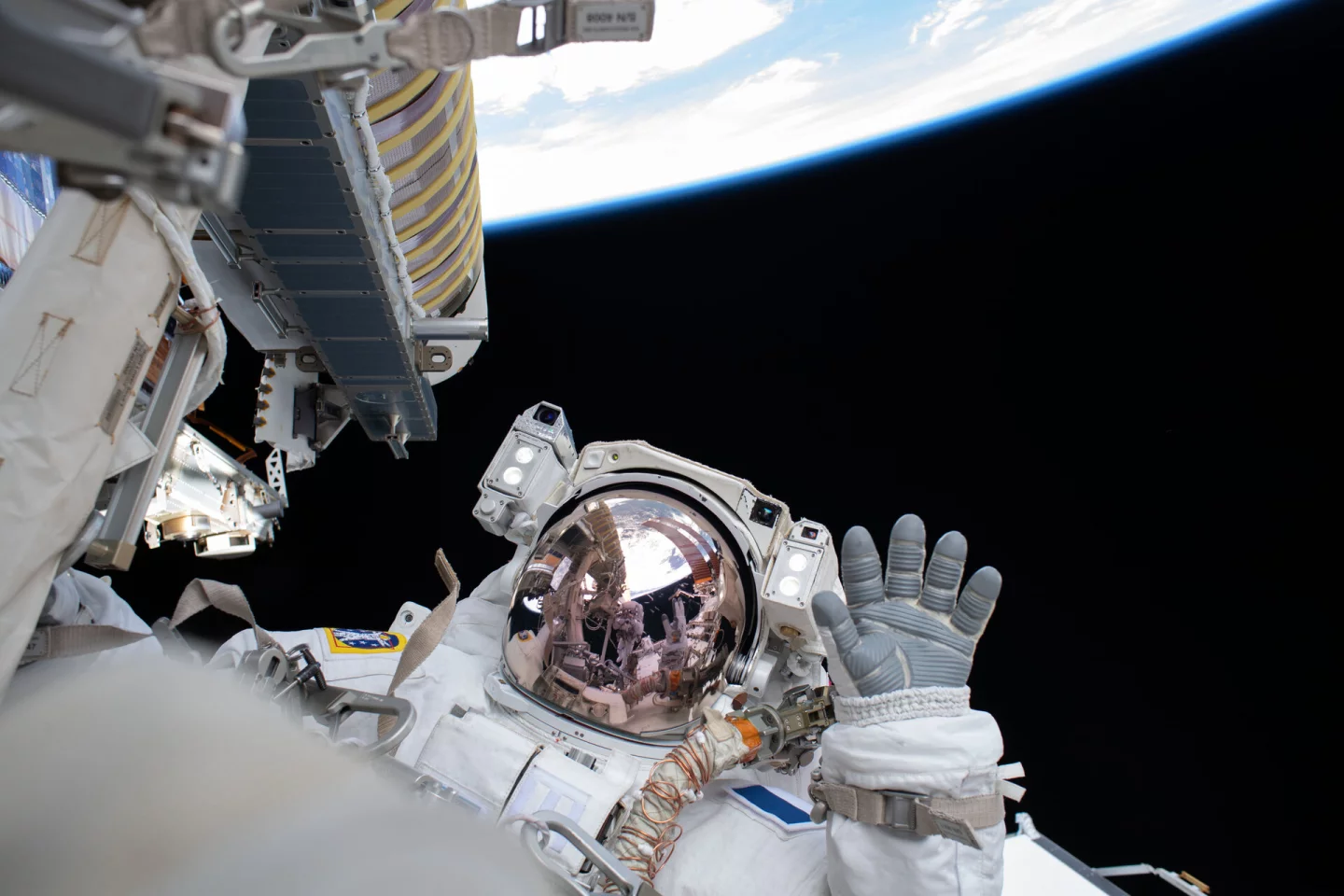Astronauts aboard the International Space Station (ISS) have undertaken three spacewalks over a 10-day period in order to fit a new set of solar arrays to the exterior hull of the ageing spacecraft. The two newly installed roll-out solar arrays will eventually be augmented by a further four arrays that will provide power to the station as it serves as a springboard for the Artemis Moon exploration program.
The International Space Station is a technological marvel that, since November 2000 has been the only outpost beyond Earth’s atmospheric shell to continuously play host to a human crew. It measures over 365 ft (111 m) across, and has been fitted with radiation shielding and other technologies needed to keep a crew of astronauts alive, well and productive for prolonged periods of time.
However, while the station is extremely well engineered, parts of it are now over two decades old, and starting to show signs of degradation. As it stands, NASA and its partners are locked in a constant cycle of repair, refurbishment and replacement in order to keep the station in working order.
Recently, NASA astronaut Shane Kimbrough and ESA astronaut Thomas Pesquet embarked on a series of three spacewalks to upgrade the station’s power generating capacity, by adding a further two solar arrays to the exterior of the outpost.
The first spacewalk took place on June 16, took a grand total of 7 hours and 15 minutes, and saw the duo collect the bulky solar arrays and transport them to the installation site. However, during the walk Kimbrough’s suit experienced a malfunction with its Display and Control Module, which keeps track of an astronaut’s temperature, vitals and suit pressure while outside the station. The NASA astronaut was forced to return to the airlock in order to fix the problem.
Though the team was able to restart the system and remedy the problem, the process took a lot of valuable time, and resulted in Kimbrough and Pesquet Being unable to complete the installation of the first array.

On June 20, the team ventured through the airlock for the second spacewalk. Kimbrough and Pesquet began by removing the panels from their transport tubes and then proceeded to align and connect the first array’s data and power cables.
The latter task was completed when the station passed into it’s night-time phase – during which the Earth was positioned between the ISS and the Sun – in order to ensure that there was no risk of the team getting an electric shock. But wasn't without its issues either. Pequet was forced to use a length of wire for an improvised repair when Kimbrough's camera and lighting system came partially detached from the helmet mount.
During the final spacewalk, which took place on June 25, the astronaut’s were able to attach and connect the cables of the second solar array, and the two new additions have reportedly been supplying power to the station ever since.
Eventually, the space station is set to be augmented with a grand total of six new solar arrays, which will provide a 20 - 30 percent boost to the ISS’s power generation capacity as it acts as a springboard for the Artemis program, and fulfills a host of other roles. The Lunar Gateway Moon-orbiting space station will be powered by the same kind of unfurling iROSA design as the ISS’s new panels.
Source: ESA







